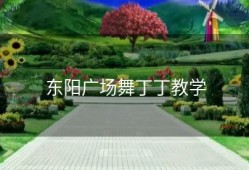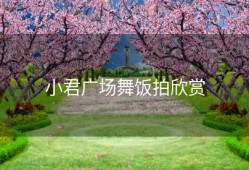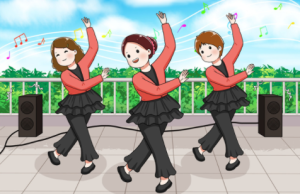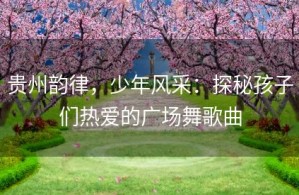Dance to the Melody: A Folk Square Dance Extravaganza
- 广场舞百科
- 2024-03-30 13:42:30
- 65
Content:

Folk square dance has been a beloved cultural tradition in many countries for centuries. Combining vibrant music, lively steps, and a sense of community, it continues to captivate people of all ages. In this English folk square dance extravaganza, we will explore the rich history, diverse styles, and captivating music that make this dance form so enduring and enjoyable.
The Origins of Folk Square Dance:
Folk square dance originated in Europe during the 16th century. It was a popular social activity in which people danced in squares or circles to the rhythm of folk melodies. The dance later spread to North America, where it became an essential part of American folk culture. Over time, regional variations emerged, each with its unique steps and music.
English Folk Melodies:
English folk music, with its rich heritage and timeless melodies, provides the perfect backdrop for square dance. The catchy tunes, often featuring instruments like the fiddle, accordion, and guitar, are ideal for accompanying the lively steps of the dancers. Some popular English folk melodies used in square dance include "Country Gardens," "The Tailor's Cress," and "Speed the Plough."
The Joy of Folk Square Dance:
Folk square dance is not just a form of entertainment but also a celebration of community and cultural heritage. The dance brings people together, fostering a sense of unity and camaraderie. Participants of all ages and backgrounds can join in, making it an inclusive and enjoyable activity for everyone.
The Basics of Folk Square Dance:
Folk square dance is relatively easy to learn, making it accessible to beginners and experienced dancers alike. The dance typically involves a formation of four couples, arranged in a square. Each couple faces another couple across the square, with the dance steps being called out by a caller. These steps include basic movements like "do-si-do," "allemande left," and "swing your partner."
Different Styles of Folk Square Dance:
There are several styles of folk square dance, each with its unique characteristics and steps. Some of the most popular styles include:
1、Traditional English Square Dance: This style focuses on classic English folk melodies and traditional steps. Dancers often wear colorful folk costumes, adding to the authenticity of the experience.
2、American Square Dance: American square dance incorporates elements from various European folk dances. It is known for its energetic steps and lively callers, who often add a touch of humor to the proceedings.
3、Contra Dance: Originating from New England, contra dance is a partner dance that combines elements of square dance and folk dance. Dancers form long lines and perform a series of figures, switching partners throughout the dance.
4、Celtic Square Dance: Drawing inspiration from Irish and Scottish folk traditions, Celtic square dance features intricate steps and haunting melodies. Dancers may use props like baskets and sticks, adding to the uniqueness of the style.
The Benefits of Folk Square Dance:
Folk square dance offers more than just a fun and engaging activity. It also provides a range of health benefits, including improved cardiovascular fitness, coordination, and balance. Additionally, the social aspect of the dance helps build friendships and a sense of belonging within the community.
Conclusion:
The English folk square dance is a vibrant and enduring tradition that continues to captivate people around the world. With its rich history, diverse styles, and captivating music, it offers a unique and joyful dancing experience. Whether you're a seasoned dancer or a beginner, joining a folk square dance event is a fantastic way to celebrate cultural heritage, connect with others, and enjoy the timeless beauty of English folk melodies. So, let's put on our dancing shoes and step into the world of folk square dance!
免责声明:本网站上的所有文章内容均来自互联网。本网站仅在法律允许的范围内使用、分享和传播这些内容,不违反任何版权或知识产权法。如发现本站有涉嫌抄袭侵权/违法违规的内容,请发送邮件25538@qq.com举报,一经查实,本站将立刻删除。
本文链接:https://www.zhuangrou.com/gcw/2715.html



















